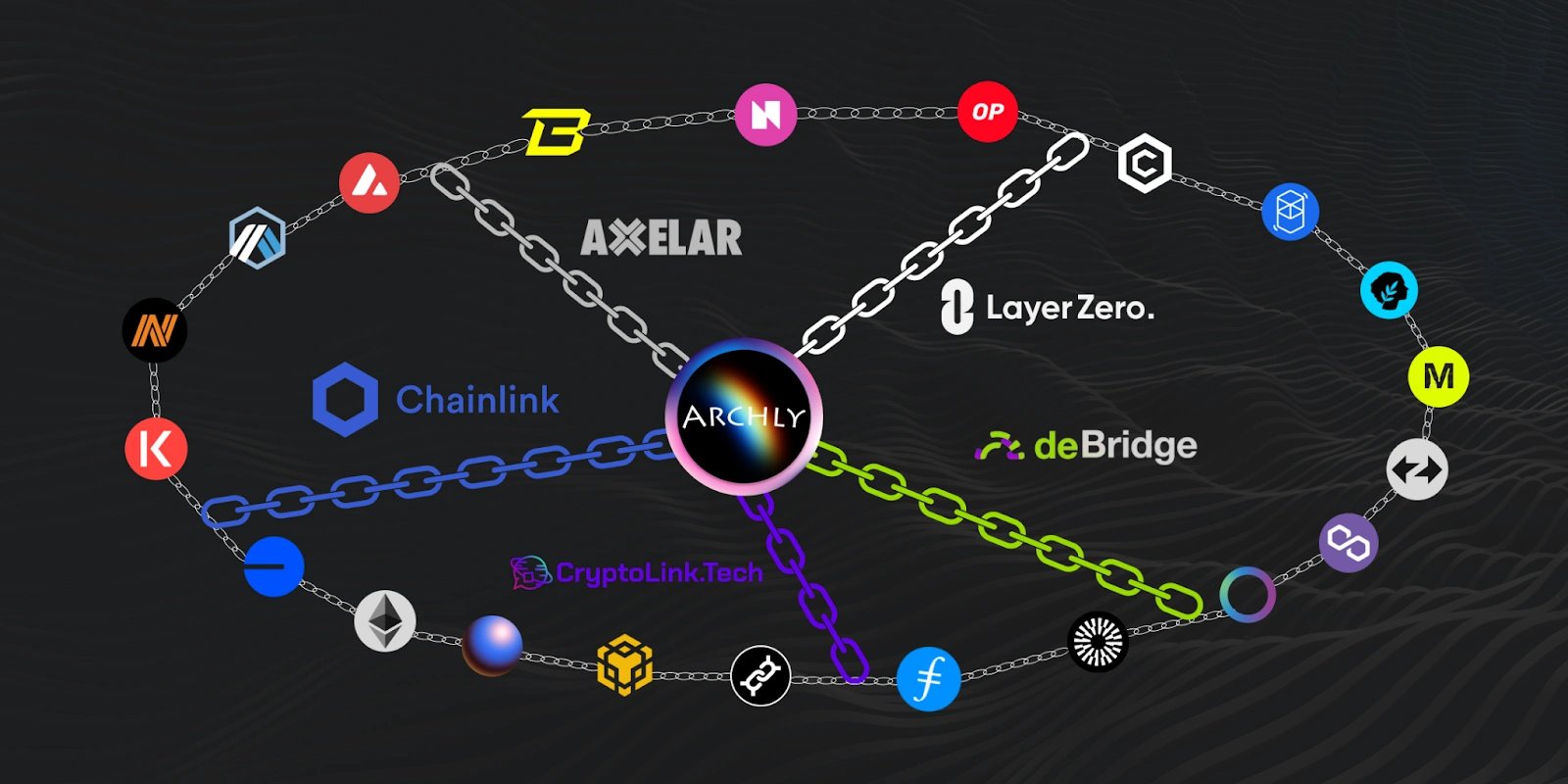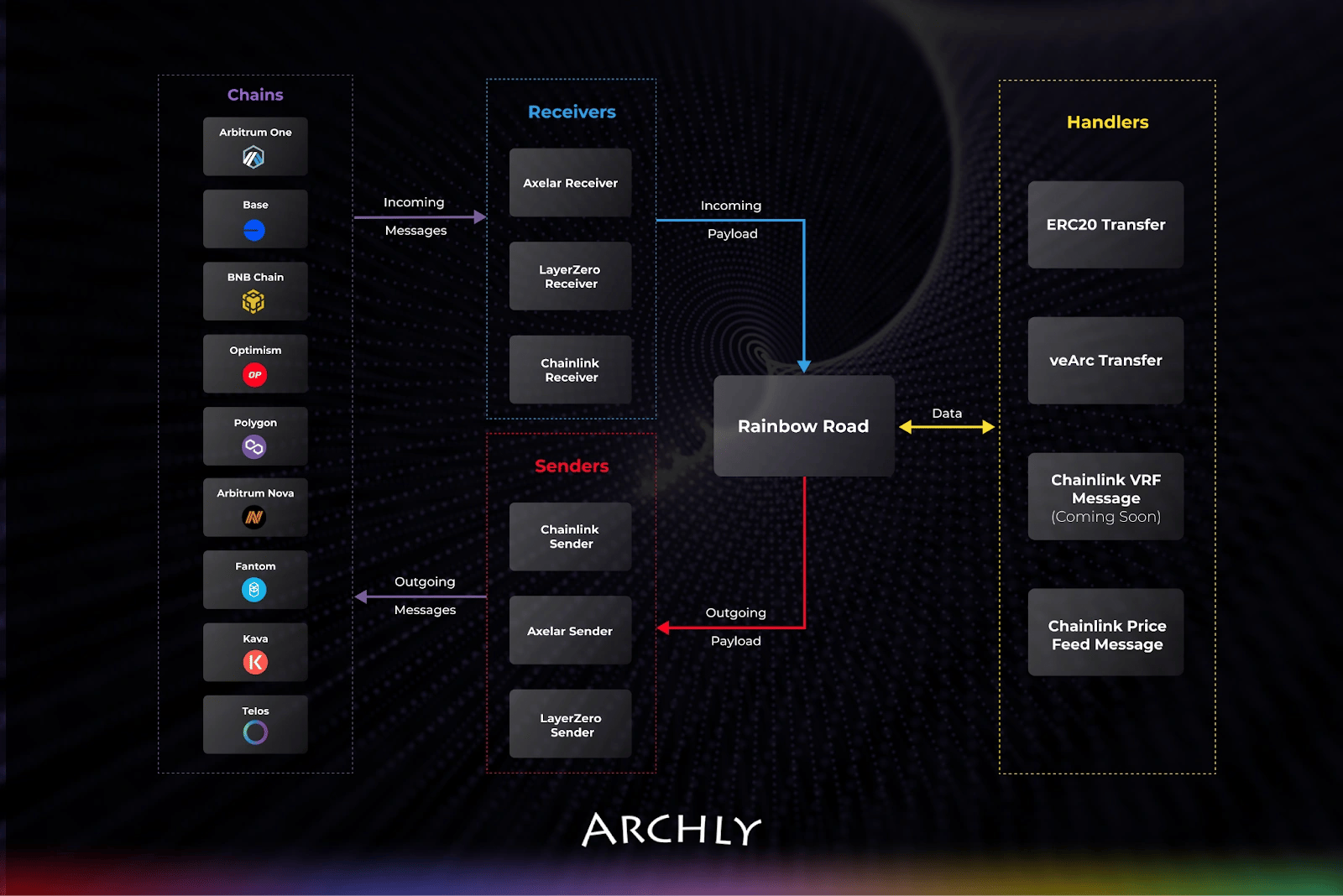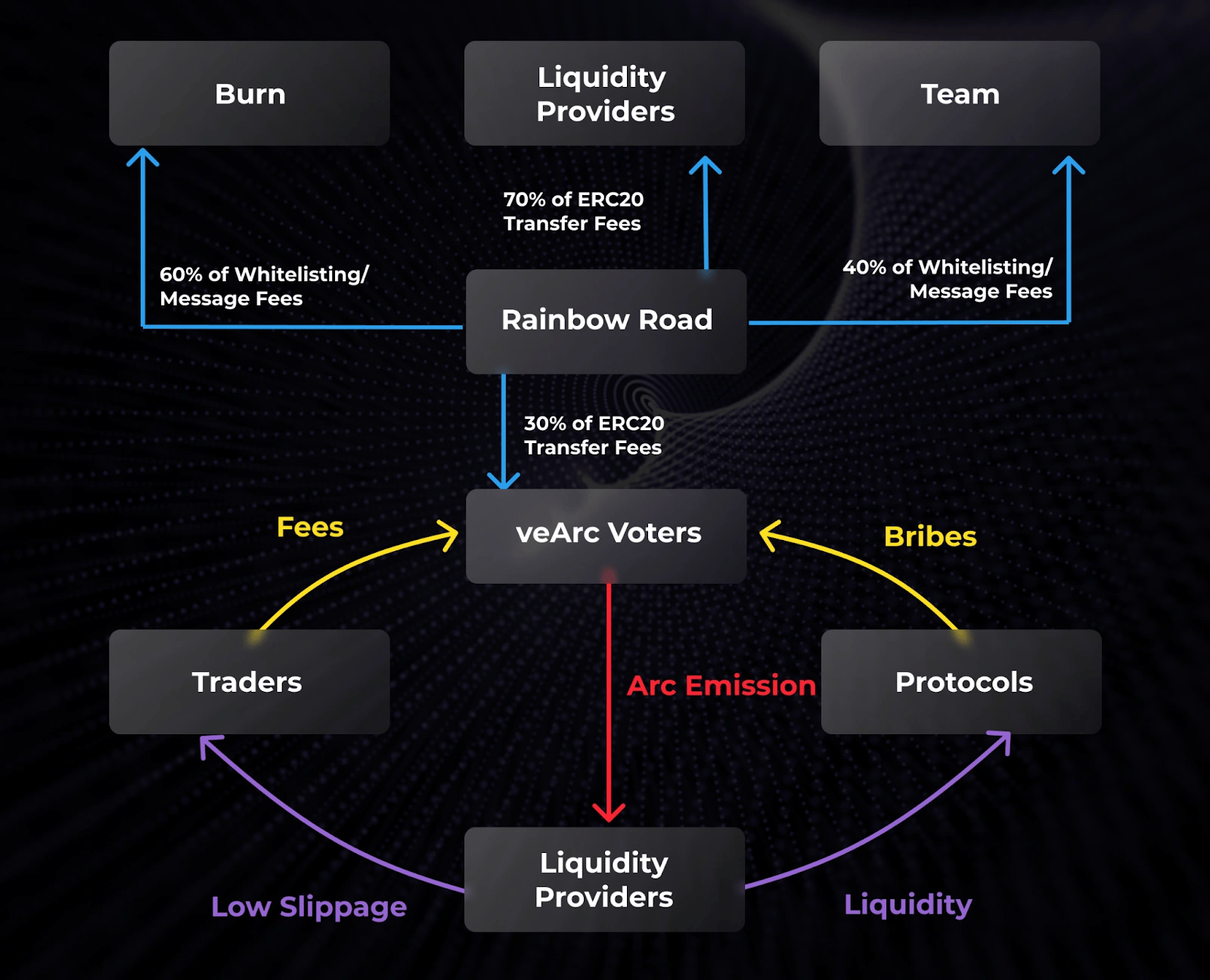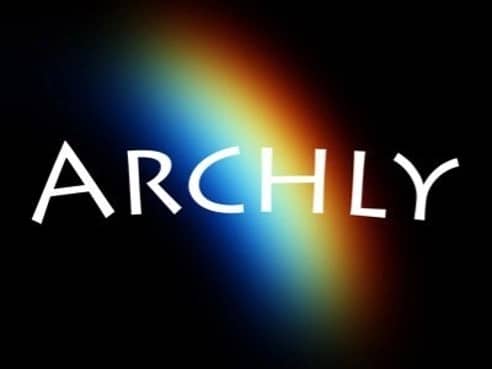Subscribe to wiki
Share wiki
Bookmark
Archly
Archly
Archly Finance provides cross-chain liquidity solutions for protocols across EVM chains, with the goal of incentivizing liquidity provision. It aims to enable seamless cross-chain experiences for users on any blockchain within its ecosystem, with its core components including a decentralized exchange (DEX) and Rainbow Road.[1][2][3]
Overview
Archly works to empower any user on any chain to engage in seamless cross-chain experiences using the DEX and Rainbow Road protocols along with the upcoming Reactor chain. Archly's mission is to provide an abstraction layer of infrastructure across any chain on which projects can build upon to power any scenario in a reliable, secure, and consistent environment.
The Archly decentralized exchange (DEX) provides permissionless liquidity solutions across EVM chains, aiming to become the first truly cross-chain DEX. Rainbow Road serves as an infrastructure abstraction layer, facilitating seamless cross-chain experiences by integrating with underlying chains.[1][2][4]

Products
Archly DEX
Archly DEX, launched on November 25, 2022, aims to facilitate equitable access to DeFi on any chain, functioning as a cross-chain decentralized exchange with nominal fees, minimal slippage, and a specific focus on NFT secondary markets. On November 26th, 2023, DEX v2 was officially launched.
It operates as a 100% permissionless liquidity solution for protocols across various EVM chains, incentivizing liquidity provision for diverse use cases. Building upon Solidly's groundwork, Archly has enhanced the design for true cross-chain compatibility, introducing improvements such as customizable fee rates and fine-tuned emission controls. Through these enhancements, Archly intends to foster a robust and permissionless ecosystem for decentralized exchange.[1][2][5][6][7][18]
Rainbow Road
Launched on October 19th, 2023, the Rainbow Road operates across various EVM chains such as Arbitrum Nova, Arbitrum One, Base, BNB Chain, Fantom, Kava, Optimism, Polygon, and Telos EVM, facilitated by Chainlink’s Cross-Chain Interoperability Protocol (CCIP) and Axelar’s General Message Passing (GMP). It serves as an infrastructure abstraction layer, aiming to streamline cross-chain experiences by integrating with underlying chains and infrastructure protocols. This integration eliminates the need for repetitive integration tasks, empowering projects and businesses to focus on application development while Rainbow Road handles cross-chain operations.
At its core, Rainbow Road aims to simplify cross-chain experiences by centralizing components such as receivers, senders, and handlers. These manage tokens, message transmission, and task execution for cross-chain functionality. Handlers extend a chain’s resources to benefit other integrated chains. Rainbow Road offers benefits such as consistent costing via the Arc utility token, abstracting message passing protocols, enabling self-service token whitelisting, and providing access to services across chains. These efforts aim to simplify cross-chain operations and enhance interoperability for users and businesses utilizing Rainbow Road.[1][8][9][10][11]

Archly Reactor
Announced by Archly on April 20th, 2024, the upcoming Archly Reactor aims to redefine the ve(3,3) experience within the Archly ecosystem. It plans to introduce a new EVM-Compatible chain, alongside the existing DEX and Rainbow Road, to explore new possibilities. Unlike traditional chains, Reactor aims to prioritize openness and inclusivity, empowering users across all chains. Governed by Arc holders, especially veArc holders, Reactor aims to facilitate cross-chain governance, ensuring participation from any chain with veArc holders.
Reactor aims to focus on simplicity, fairness, and forward-thinking, striving to create an equitable environment for all users, projects, and supporters. Grants, rewards, and incentives will be distributed fairly based on contributions, fostering collaboration and interoperability among chains and projects. Reactor plans to introduce Arc as the native gas token and veArc holders as the governing body, driving the expansion of the Archly ecosystem across multiple chains. [12]
Tokenomics
Archly Finance employs two tokens for utility and governance purposes: $Arc, which operates as an ERC-20 utility token within the Archly ecosystem, and $veArc, an ERC-721 token functioning as a non-fungible token (NFT).[13]
$Arc
$Arc serves multiple functions within the Archly ecosystem, including rewarding liquidity providers through emissions, facilitating payments for token whitelisting on the DEX and Rainbow Road, enabling message transmission across the Rainbow Road, and other utility purposes.[13]
$veArc
$veArc, also known as veNFT, is utilized for earning bribes and fees within the Archly ecosystem. Holders of $Arc tokens have the option to vote-escrow their tokens, exchanging them for $veArc NFTs. Additional tokens can be appended to the $veArc NFT at any time.
The lock period, termed as vote-escrowed period, can extend up to 4 years, with a corresponding linear relationship between the duration and the resulting $veArc tokens. For instance, 100 $Arc tokens locked for 4 years will yield 100 $veArc tokens, while the same amount locked for 1 year will result in 25 $veArc tokens. This mechanism aims to ensure that longer vesting periods correlate with higher voting power and rewards for the $veArc holder.[13]

Emissions
Emissions management within the Archly ecosystem is orchestrated at the chain level, aiming to achieve an 80% lock rate across all chains. To initiate emissions, existing Arc and veArc tokens must be transferred via the Rainbow Road from other chains. A maximum of 25 million Arc tokens will be generated, primarily for new Arc-NATIVE pools and team obligations.
Emissions commence on chains with at least 5% of the global Arc supply, with adjustments made to sustain a consistent schedule. $veArc holders receive a rebase linked to LP emissions and the $veArc to $Arc supply ratio, intended to mitigate vote power dilution. The $veArc supply influences weekly LP emissions; more locked $Arc translates to lower $Arc distribution, enabling $Arc holders to manage inflation.[14]
Gauge Voting
In Gauge Voting, $veArc holders determine which liquidity pools receive emissions by voting on preferred gauges. $Arc emissions are distributed proportionally to total votes received. Voters earn 100% of trading fees and bribes from their selected pools. Actions related to $veArc NFT, including voting, are subject to a one-week lock period, which enhances protocol security.[15]
Rewards
In Archly Finance, rewards come in four forms:
- Emissions: $Arc tokens are distributed to liquidity pool stakers based on their voting power in each epoch.
- Fees: Liquidity pool trading fees are distributed to voters in pool tokens, proportionate to their voting power and the accrued weekly fees.
- Bribes: External rewards, known as bribes, can be added to whitelisted pools and are distributed to voters based on their share of pool votes.
- Rebases: $Arc tokens are distributed to $veArc holders to prevent voting power dilution.[16]
See something wrong?
